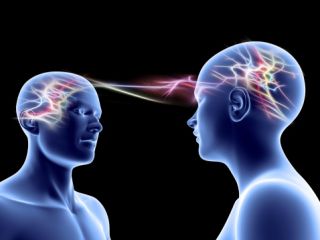Neuroscience
The Neuroscience of Vitality, Tip 2: Mirror Neurons
We are hardwired for empathy via our mirror neurons. Here's how to wield them.
Posted July 4, 2014

As a practicing psychiatrist, I have gathered my top seven neuroscience tips for vitality that have proven to be useful for virtually all of my patients, and I am eager to share them with you. In my previous article, you learned about neuroplasticity. Today, in my second vitality tip, you'll learn how to wield the power of mirror neurons.
Our brains have “mirror neurons” that fire when we watch others engage in activities and express emotions. Scientists discovered mirror neurons by accident. They had monkeys in their lab wired to see what part of their brain they were using. One afternoon, the scientists took an ice cream break (score one for Ben and Jerry’s) and to their great surprise, they noticed the portion of the monkey’s brain responsible for tongue movement began to fire.
Remember the old phrases, “when you smile, the whole world smiles with you”, “a happy wife is a happy life”? Well, that’s because of mirror neurons. The reverse is true too. “A family is held hostage to its sickest member” “You are only has happy as your least happy child.” We are wired to feel one another’s pleasures and pains. Our survival depends on it.
Again we need to look at our most vulnerable members of society to understand the role of mirror neurons. Our young are born extremely vulnerable. They cannot use words to express their needs for one to several years. Thus, we must be wired to communicate in non-verbal ways. Our most important interactions, those essential for the survival of our next generation are entirely non-verbal. The smile of a child is infectious and their cry is unbearable for most of us because they so powerfully impact our brain via mirror neurons.
Emotions are contagious and flow from the most powerful person in the room. Think Barack Obama during the financial crisis or Rudolph Giuliani after September 11. Remember this fact the next time you walk into a room. If you come home in a bad mood and your partner or child snaps at you, don’t be surprised! They almost can't help it if you have triggered their mirror neurons and caught your distress.
Taking ten minutes to alter your mood before you come home will have a profound impact on the whole household and the rest of your evening. Same holds true for important business meeting, social events, or any human encounter. We are transmitting our emotions wherever we go, so best to make sure we are transmitting the right ones. Think of the escalating sexual excitement when both parties are in the mood as a model for how our mirror neurons can get fired up and positively impact those around us.
Not only are emotions transmitted via mirror neurons but actions are too. Many athletes have been using mirror neurons to practice their sports for years, even though they didn’t understand what they were doing. By watching yourself or others, you are actually training your brain. Visualization works in the same way.
Next time you watch an engrossing sporting event, you will understand why you may feel exhilarated or drained after the event. You are catching the powerful emotions of the players and in addition you are firing many of the parts of your brain responsible for movement just like the monkey fired their tongue muscles. Same holds true at a rock concert, lecture, debate, or any enthralling event you attend. Think about the powerful impact of watching pornography. Mirror neurons ignite.
For those of you who have read “The Secret,” maybe it now seems a little bit less like magic. If you want to create something, you can be very powerful by doing it and others will naturally follow when you trigger their mirror neurons. So if you want to raise confident and happy children ( and who doesn’t?), now you know “the Secret.” Act happy and confident, and they will too. And make sure you maintain your role as the most powerful person in the room as often as possible so they are catching your emotions not the other way around.
Recommended reading: The Tell-Tale Brain by V. S. Ramachandran




